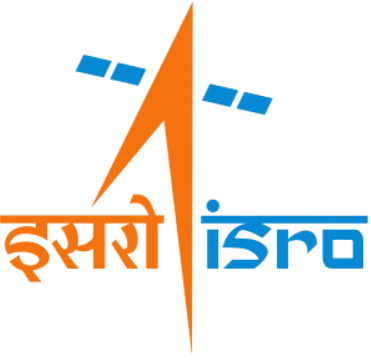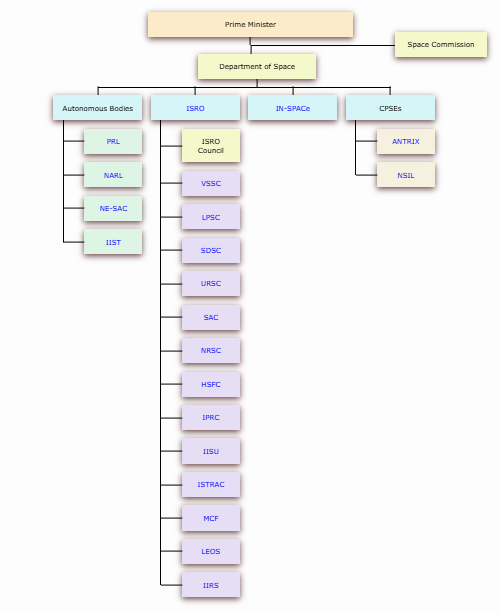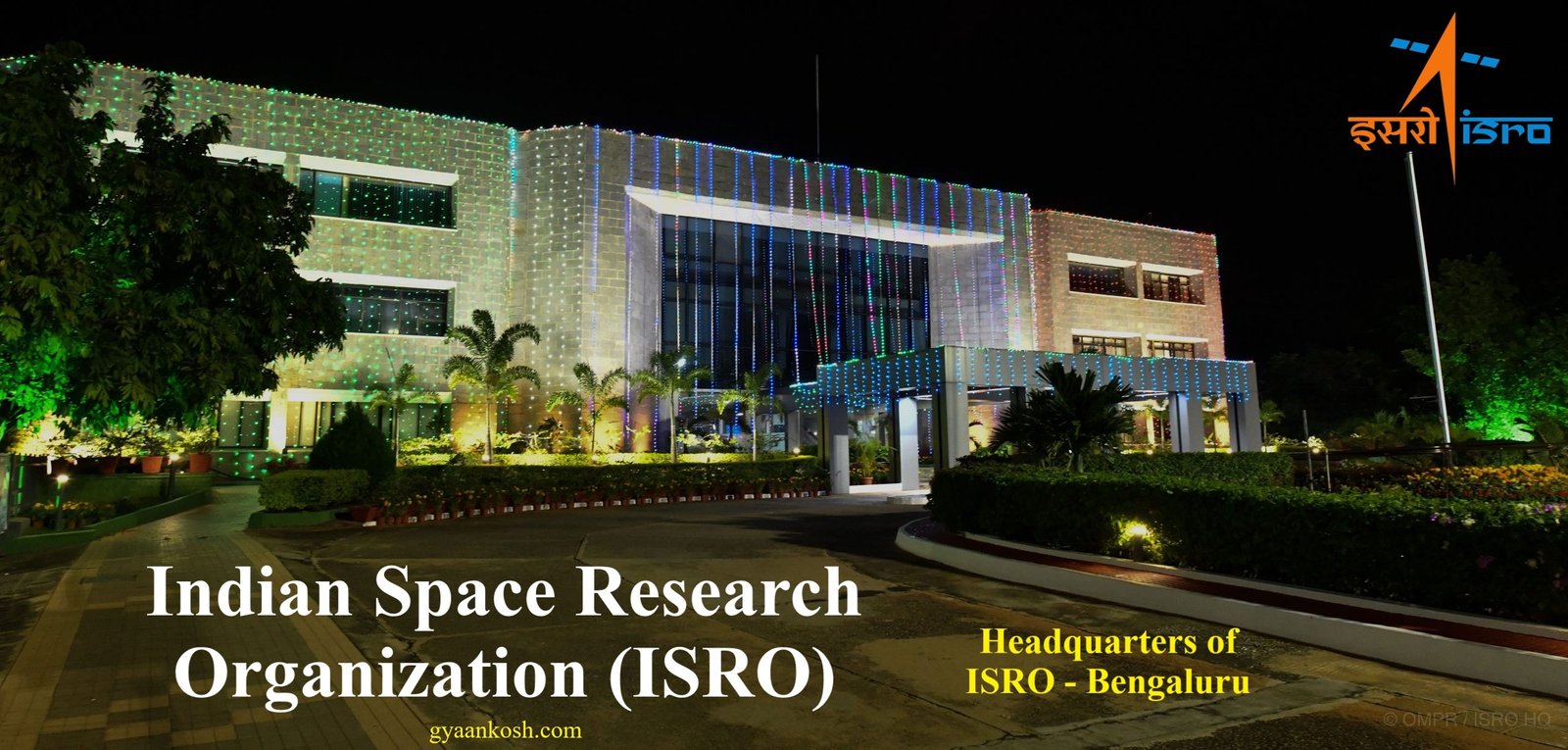Contents
Indian Space Research Organisation (ISRO) is the National space agency of India. This organisation is involved in science, engineering and technology to harvest the benefits of outer space for India and the mankind. ISRO is a major constituent of the Department of Space (DOS), Government of India.
About ISRO
Indian Space Research Organisation (ISRO) is previously known as Indian National Committee for Space Research (INCOSPAR). This organisation is set up by the Government of India by then-Prime Minister Jawaharlal Nehru in 1962, as envisioned by Dr. Vikram Sarabhai.
It was formed on August 15, 1969 and superseded INCOSPAR with an expanded role to harness space technology. Department of Space (DOS) was set up and ISRO was brought under DOS in 1972.
The main objective of ISRO/DOS is the development and application of space technology for various national needs. And for this, it has established major space systems for communication, television broadcasting and meteorological services; resources monitoring and management; space-based navigation services. It has developed satellite launch vehicles, PSLV and GSLV, to place the satellites in the required orbits.

It built India’s first satellite Aryabhata which was launched by the Soviet space agency Interkosmos in 1975. In 1980, it launched the satellite RS-1 onboard the indigenously built launch vehicle SLV-3, making India the 7th country to undertake orbital launches.
It has its headquarters in Bengaluru. It has various centers and units that includes –
- Launch Vehicles are built at Vikram Sarabhai Space Centre (VSSC), Thiruvananthapuram;
- Satellites are designed and developed at U R Rao Satellite Centre (URSC), Bengaluru;
- Integration and launching of satellites and launch vehicles are carried out from Satish Dhawan Space Centre (SDSC), Sriharikota;
- Development of liquid stages including cryogenic stage is carried out at Liquid Propulsion Systems Centre (LPSC), Valiamala & Bengaluru;
- Sensors for Communication and Remote Sensing satellites and application aspects of the space technology are taken up at Space Applications Centre (SAC), Ahmedabad;
- Remote Sensing satellite data reception processing and dissemination is entrusted to National Remote Sensing Centre (NRSC), Hyderabad.
History
In 1950, the Department of Atomic Energy (DAE) was founded with Bhabha as its secretary. It provided funding for space research throughout India. Initially there was no dedicated ministry for the space programme and all activities of INCOSPAR relating to space technology continued to function within the DAE.
On 21 November 1963, the first sounding rocket – Nike-Apache was launched from the Thumba Equatorial Rocket Launching Station. This Nike-Apache was an American-made rocket with a French payload. This launch took place in the coastal village of Thumba, near Thiruvananthapuram in Kerala.
Then on 01 January 1965, Space Science and Technology Centre (SSTC) was established in Thumba at Veli hills near Thiruvananthapuram, Kerala. It was created to develop rockets for launching satellites.
Then on 1 January 1967, Satellite Telecommunication Earth Station (STES) was established in Ahmedabad, India. It was the first satellite communication earth station in the country. This station was created to establish satellite communication with the help of an artificial satellite. It was also used as a training center for Indian and International scientists and engineers.
On 2 February 1968, Prime Minister Indira Gandhi dedicated the Thumba Equatorial Rocket Launching Station (TERLS) to the United Nations. This allowed for international scientific collaboration at the station. The station was used by countries like the US, France, Germany, Japan, and the former USSR to launch sounding rockets. Thus, India eventually developed its own sounding rockets, called Rohini, and the ability to launch them from TERLS.
The IOFS officers were drawn from the Indian Ordnance Factories to harness their knowledge of propellants and advanced light materials to build rockets. H.G.S. Murthy, an IOFS officer, was appointed the first director of the Thumba Equatorial Rocket Launching Station where sounding rockets were fired, marking the start of upper atmospheric research in India. Waman Dattatreya Patwardhan, another IOFS officer, developed the propellant for the rockets.
Then on 15 August 1969 under the Department of Atomic Energy (DAE), the Indian Space Research Organization (ISRO) was established. Under the government of Indira Gandhi, INCOSPAR was superseded by ISRO.
On 01 January 1972, the ISRO began its airborne remote sensing experiments. The Remote sensing data is used to observe and manage natural resources such as water, land, and minerals. It is used in a variety of applications, including agriculture, geology, hydrology, and monitoring of drought and floods.
Later 01 June 1972, a space commission and Department of Space (DoS) were set up to oversee space technology development in India specifically and ISRO was brought under DoS. It was mainly was set up to formulate policies and oversee the implementation of India’s space program.
On 01 January 1975, Satellite Instructional Television Experiment (SITE) was launched in India which was a joint project between NASA and ISRO aimed at delivering educational television programs to rural India using satellite technology. Its main objective is to educate financially backward and academically illiterate people in rural India through satellite broadcasting.
Finally, on 01 April 1975, the Indian Space Research Organization (ISRO) became a government organization.
ISRO’s Milestone
ISRO’s milestone began after becoming the parent organisation and launching of satellites. Read below in detail about the milestone, launch vehicles and satellites of ISRO.
First Few Milestones/Satellites
After becoming govt organisation, the ISRO on 19 April 1975 launched India’s first satellite named after famous Indian astronomer “Aryabhatta“.
- ISRO on 19 April 1975 launched India’s first satellite “Aryabhatta” which was named after famous Indian astronomer.
- It was completely designed and fabricated in India and launched by a Soviet Kosmos-3M rocket from Kapustin Yar.
- It was designed to study solar physics, aeronomics, and X-ray astronomy.
- This satellite’s mainframe remained active until March 1981.
- This satellite re-entered Earth’s atmosphere in early 1992 and was destroyed.
On 01 January 1977, the “Satellite Telecommunication Experiments Project” (STEP) was initiated by ISRO.
This initiative marks the start of a project to test the potential of using geosynchronous satellites for domestic telecommunications in India. It utilized the Franco-German “Symphonie” satellite for the experiment. This project was a joint venture between ISRO and the Indian Post and Telegraphs Department (P&T).
On 07 June 1979, the Indian Space Research Organisation (ISRO) launched Bhaskara-I, the India’s first experimental remote sensing satellite.
- It was launched on 7th June 1975.
- It was the India’s first experimental remote sensing satellite.
- This satellite was named after the famous mathematician Bhāskara.
- It was created to collect data for remote sensing of Earth’s resources and meteorology.
- It carried TV and three band Microwave Radiometer (SAMIR) to collect data on hydrology, forestry, and geology.
On 10 August 1979, the Indian Space Research Organization (ISRO) launched the Satellite Launch Vehicle-3 (SLV-3 E10) from Sriharikota.
This was the first launch of India’s first launch vehicle, the SLV-3. The launch was partially successful, as the satellite could not be placed into its intended orbit. It carried the Rohini Technology Payload (RTP), a 35 kg experimental satellite. This flight was terminated after 317 seconds, and the vehicle’s remains splashed into the sea.
On 18 July 1980, India’s first satellite, Rohini RS-1, was launched into orbit from the Sriharikota Range (SHAR). The launch was carried out by the Satellite Launch Vehicle-3 (SLV-3).
- It was launched on 18th July, 1980.
- It was experimental satellite that was spin stabilized.
- The satellite carried a magnetometer, digital sun sensor, and temperature sensors.
- This satellite successfully telemetered the fourth stage parameters of the SLV-3 to ground stations.
On 01 January 1981, According to ISRO’s timeline, January 1, 1981 refers to the launch of India’s first experimental satellite launch vehicle, the Satellite Launch Vehicle-3.
It successfully placed a Rohini satellite into orbit, marking a significant milestone in India’s space program. This launch was part of a series of SLV-3 missions with subsequent launches occurring in May 1981 and April 1983.
On 31 May 1981, RS-D1 was launched from SHAR center.
- It was launched on 31st May, 1981.
- RS-D2 stands for Rohini Satellite.
- It was an experimental spin stabilized satellite designed with a power handling capability of 16W.
- It was launched onboard SLV-3 from SHAR Centre.
- The launch was a partial success as the satellite did not reach the intended height and thus it stayed in orbit for only 9 days.
On 19 June 1981, the ISRO’s first indigenous, experimental communication satellite “APPLE” was launched.
- It was launched on June 19, 1981.
- It was ISRO’s first indigenous, experimental communication satellite.
- It was three-axis stabilized geostationary communication satellites as well as in orbit raising manoeuvres, in orbit deployment of appendages, station keeping, etc.
- It was launched into GTO (Geosynchronous Transfer Orbit) (Geosynchronous Transfer Orbit) by the third development flight of ESA’a Ariane vehicle from Kourou(CSG), French Guyana.
- It was designed and built in just two years with limited infrastructure in industrial sheds.
- It was used in several communication experiments including relay of TV programmes and radio networking.
On 20 November 1981, the ISRO launched the Bhaskara-II satellite from Kapustin Yar using the Soviet Interkosmos rocket.
- It was launched on 20 November, 1981.
- It was created to conduct experiments to observe the Earth for applications in geology, forestry, and hydrology and also to study the ocean surface using the Satellite Microwave Radiometer (SAMIR).
- It had a low Earth orbit (LEO), two band television camera system and Satellite Microwave Radiometer (SAMIR).
- It was was named after the famous Indian mathematician and astronomer Bhaskara II, also known as Bhaskaracharya.
2024
NavIC Satellite
ISRO launched its historic 100th mission – GSLV-F15 lifting off with a navigation satellite from the Satish Dhawan Space Centre in Sriharikota, India on 29th January, 2025. NavIC stands for India’s Navigation with Indian Constellation (NavIC). The rocket successfully placed the NVS-02 satellite in the intended orbit.
It is the India’s independent regional navigation satellite system designed to provide accurate Position, Velocity, and Timing (PVT) service to users in India and the region extending about 1,500 km beyond the Indian landmass, which is its primary service area.
NVS-02 is the second satellite in the NVS series and part of India’s Navigation with Indian Constellation (NavIC). It provides two types of services: Standard Positioning Service (SPS) and Restricted Service (RS). The former provides a position accuracy of better than 20 metres and a timing accuracy of better than 40 nanoseconds over the primary service area. 5 second-generation NavIC satellites are envisaged to augment the NavIC base layer constellation with enhanced features to ensure continuity of services.
Objectives
According to the ISRO, its main objectives are below –
- Operational flights of Polar Satellite Launch Vehicle ( PSLV), Geo-synchronous Satellite Launch Vehicle (GSLV) and Small Satellite Launch Vehicle (SSLV)
- Design and development of New Space Transportation solutions
- Design, Development and Realization of Communication Satellites
- Design, Development and Realization of Earth Observation Satellites.
- Development of Navigation Satellite Systems
- Development of satellites for Space Science and Planetary Exploration
- Earth Observation Applications
- Space based systems for Societal Applications
- Advanced Technologies and newer initiatives
- Training, Capacity building and Education
- Promotion of Space technology
- Infrastructure / Facility Development for space research
- International Cooperation
- Commercial utilisation of the products and services emanating from the Indian space programme
- Promotion & Authorisation of Indian private firms in Space sector
Organizational Structure
ISRO is managed by DOS which comes under the Space Commission which is headed by the Prime Minister.

DOS which also manages various agencies or institutes that includes:-
- Antrix Corporation – The marketing arm of ISRO, Bengaluru
- Physical Research Laboratory (PRL), Ahmedabad
- National Atmospheric Research Laboratory (NARL), Gadanki, Andhra Pradesh
- NewSpace India Limited – Commercial wing, Bengaluru
- North-Eastern Space Applications Centre (NESAC), Umiam
- Indian Institute of Space Science and Technology (IIST), Thiruvananthapuram – India’s space university



Leave a Reply
You must be logged in to post a comment.